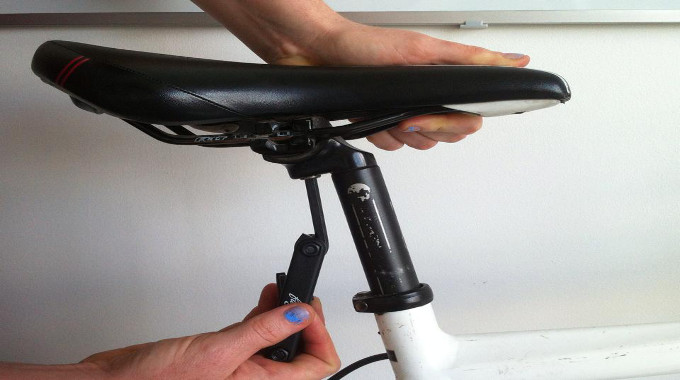Avoiding a stolen bike

Bike theft is horrible – and you don’t want to be obtaining stolen goods. If the price looks unrealistically good, this should immediately set off alarm bells – the deal is probably too good to be true.
Ask the seller for a history of the bike – they should be able to tell you when they got it, and how long they’ve had it. A very trustable seller will have kept their receipt from the original purchase, but you can’t expect everyone to do that.
The frame should also have an ID number on it – police recommendation is that you check this number on the BikeRegister database. If it’s been reported stolen, it should be on here and you should walk away from the bike.
If you do buy the bike, ask the seller to make out a receipt for you, so that you have a proof of purchase, and then make sure you register the frame as your own via BikeRegister. If you’re buying online, use a service like PayPal which offers you protection should something go wrong.
Damage checking

As much as we’d love to believe that every seller out there wants to offer a good deal, we have to accept that there will be some people happy to pass off a damaged bike, putting the buyer at risk of wasting money or getting hurt.
Though you can buy a bike online and hope it’s in good condition – ideally you’ll be able to see it in the flesh. There are a few things to look out for:
1) Damage to the frame. You can’t always see this – but if the bike has taken a serious hit there may be some visible signs. Check over the frame for any cracks, especially around the chainstays, seat post, bottom bracket and forks.
2) Look out for replacement parts. It is possible that the seller has upgraded parts like the forks to improve the performance – but they might also have been replacing parts damaged in a crash. Compare the bike to a picture of the original model – if anything is different, ask why.
3) Check the seat post is not seized – ask to move it up and down (either undoing the bolt, or the quick release – depending on the bike). It should move freely, you don’t want to find you’re stuck with a bike you can’t adjust.
4) Check the wheels are true. Pick up the bike, spin the wheel – and make sure it travels in a neat, straight line – not swinging to and fro. Wheels can be replaced, but at around £100 each for a cheap set, so consider this alongside the price of the bike and your budget.
5) If you’re keeping it fairly cheap and cheerful, check the tyres don’t look like they need replacing soon, too. Looks for cracks or slashes. If you’re spending quite a bit, you will likely be buying new tyres soon, anyway – either way, factor in that new tyres could set you back £30 each or more if they do need replacing.
6) Check all the bolts on the handlebars, as well as pannier rack bolts or bottle cage mounts. Make sure all of them can be moved, none are seized or rounded. If they are, ask if you can speak to a mechanic about how easy it would be to remove and replace them before purchasing.
7) Check the cables and drivetrain. The cables should not be frayed, and should be in good working order – unless you plan to replace them or pay for a service. The drivetrain – chain, cassette and chainset – should not be rusty, and the cogs should not appear to be worn down, again, unless you have already factored in paying to replace them.










